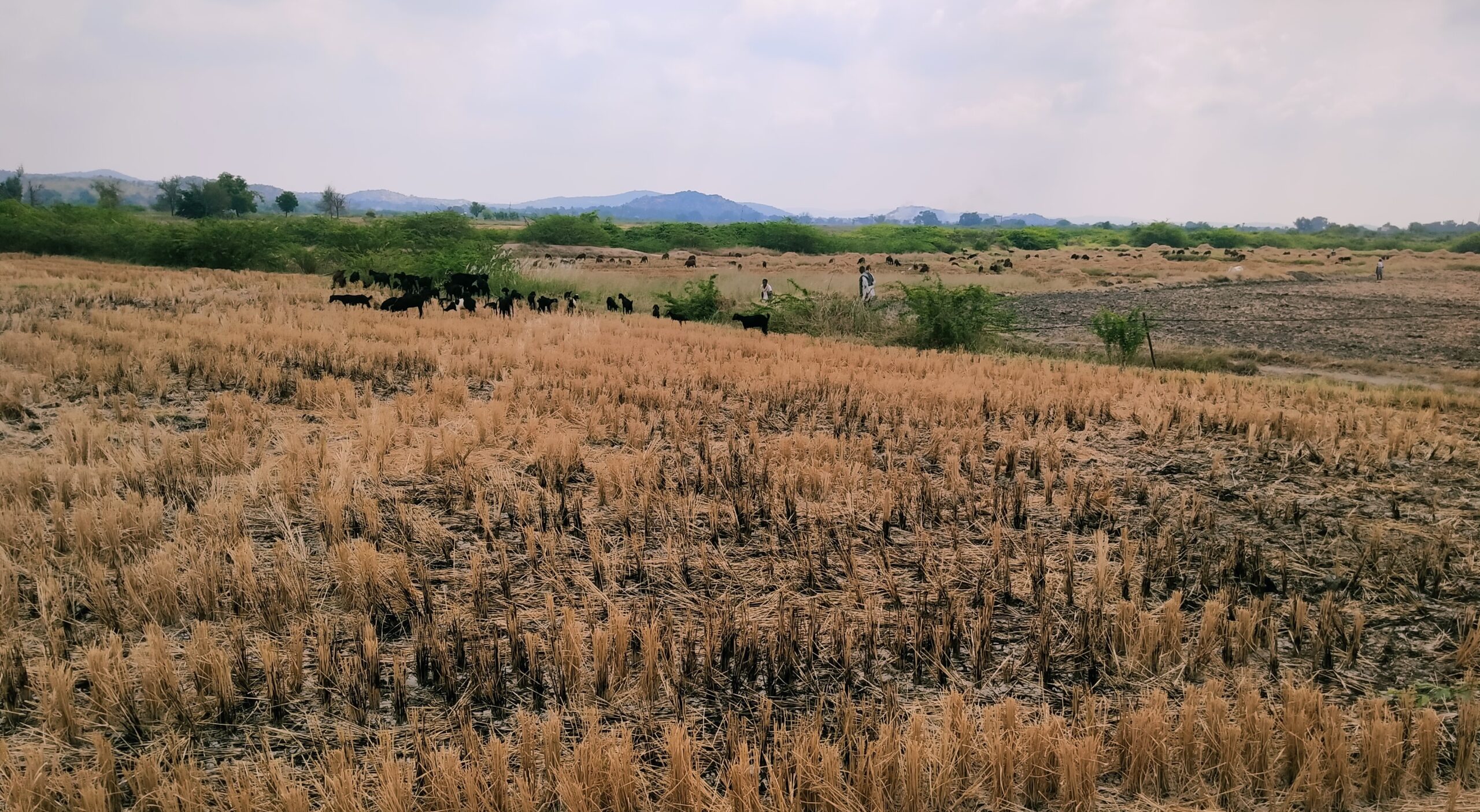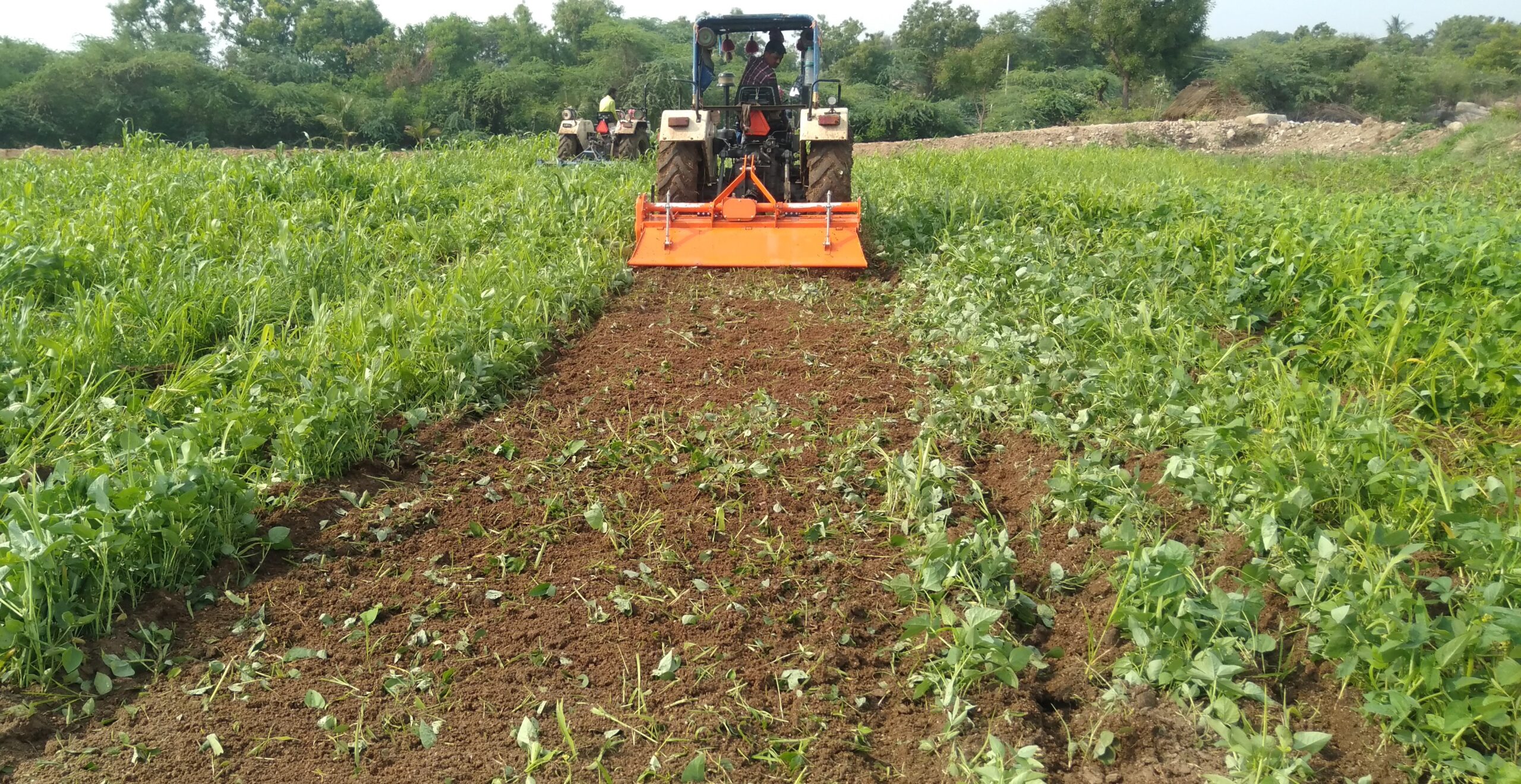From Fields of Struggle to Hubs of Innovation: Farmers, Mechanisation, and the Promise of Local Enterprise
A dusty sunrise paints the sky over Devadurga, Raichur, warming up the fields below. Lakshmi tightens her sari, picks up her sickle, and steps into the cotton fields. Like many women here, she braces herself for yet another long day of backbreaking work – weeding, harvesting, and hauling heavy sacks in the blazing Raichur heat.
Across the road, Mallesha shoulders his rusted hand sprayer. Fully aware that it is on its last legs, he nonetheless hopes it will last another round. Limited resources, time, and energy leave little room for equipment repairs or upgrades.
Both Lakshmi and Mallesha have been a part of several training programmes and demonstrations on sustainable agriculture practices and related tools. They have listened to presentations on bio-inputs and cropping techniques, and even agreed with the ideas wholeheartedly. Sadly, their lived realities were very different. Hard soil, tight windows of sowing, limited resources, poor access to equipment, and the vagaries of weather left little room for experimentation. Change rarely took root, however promising it seemed.
It Isn’t a Lack of Will – It’s a Struggle for Survival
Most farmers are married to their current practices out of necessity rather than resistance. When one dives deeper, one realises that the challenges are several fold, and their inter-play places a hard limit on the window for change:
- Resources: New methods and practices demand new or more inputs, such as livestock, quality seeds, and machinery, that many households simply cannot access or afford.
- Machine Skills: Even if equipment like tractors and sprayers are available and accessible, there is a significant gap in skill and knowledge; very few know how to operate or repair them, and the maintenance is, thus, expensive.
- Workload and Agency: While women shoulder most of the back-breaking and repetitive tasks on the field, decisions around tools, machine use, and other practices are made by men. As a result, any innovation or idea that can make farm work easier seldom reaches them.
- Time and Capacity: During peak seasons, every hour is spoken for. Practices such as intercropping or bio-input preparation require additional time and effort, and even when farmers see value in them, their daily grind leaves them with little energy or bandwidth to accommodate these practices.
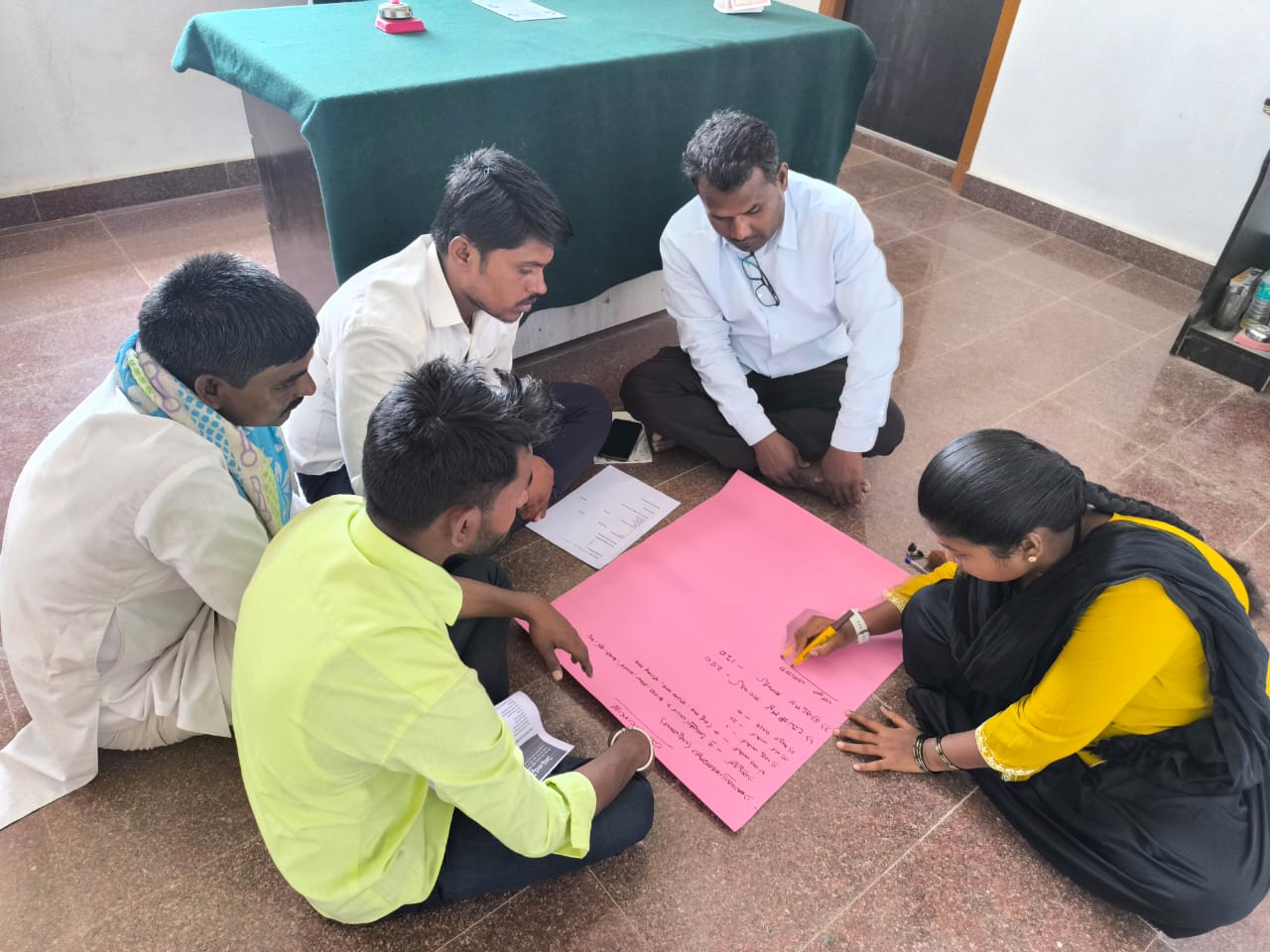
Farmers expressed interest in learning to use drones, machinery skills, and lightweight weeders to ease their workload.
Caught in this cycle, most farmers fall back on what they are most familiar with – monocropping, chemical-based agriculture, and heavy manual labour. Sustainability, then, remains a “someday” goal.
When farmers from six villages in Raichur came together for a workshop facilitated by WELL Labs, in collaboration with Innovation Guild and Prarambha, they strongly echoed the challenges discussed above.
The conversations also revealed that double cropping was possible in irrigated villages, but rising input costs, labour shortages, and weak mechanisation slowed progress. In dryland villages, crop diversity offered some respite in the face of weather vagaries, but the lack of adaptable machinery meant that every task relied on human endurance, resulting in heavy drudgery.
Read more: Unpacking the Gender Gap in India’s Agricultural Tech Revolution
Yet, amidst the frustration and fatigue, a ray of hope shone through the room. Farmers expressed interest in learning to use drones, the youth wanted to learn machinery skills, and women asked for lightweight weeders to ease their workload. The optimism and will is strong – what’s missing is the bridge to make this accessible, affordable, and truly local.
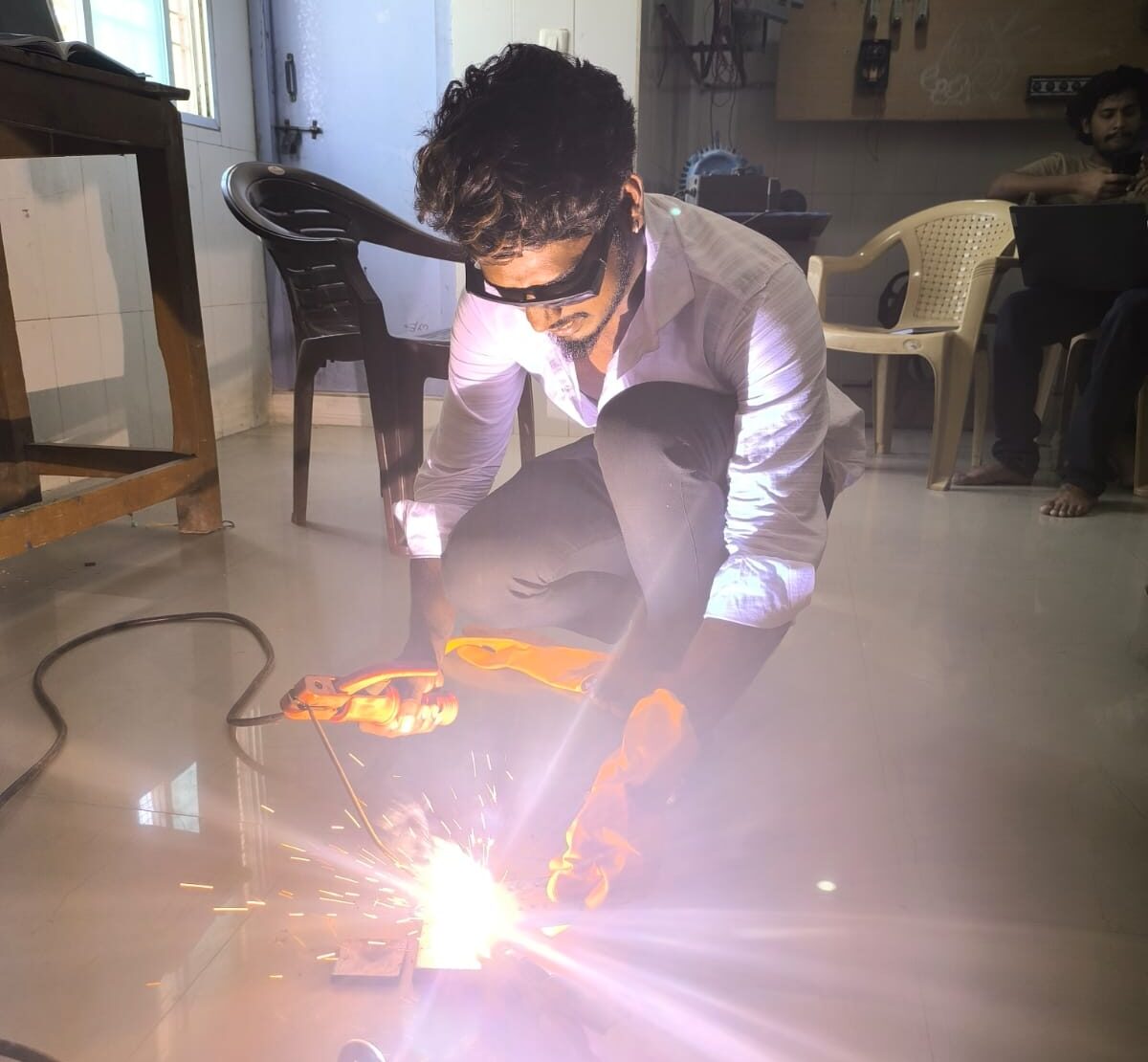
Village-Level Entrepreneurs are insiders – farmers, rural youth with mechanical interest and aptitude, skilled women with eagerness to contribute, or local mechanics with hands-on knowledge of machines and their works
Bridging the Gap: The Village-Level Entrepreneurs (VLE) Model
What if, instead of relying on experts or trainers, every village trusted its own people, who were equipped and trained to bridge the critical gap between idea and implementation? The result could be quite powerful.
VLEs are not strangers parachuted in for a specific project duration. They are insiders – farmers, unemployed rural youth with mechanical interest and aptitude, skilled women with eagerness to contribute, or local mechanics with hands-on knowledge of machines and their works. The VLE model aims to build and strengthen local capacities to serve as hubs of innovation, technology adoption, and enterprise creation. It is a practical model where people from within the village community are identified and provided with opportunities to learn, upskill, and become the bridge between local needs and agricultural technologies. Their role is multifaceted:
- Renting out and operating machines such as power weeders, sprayers, harvesters when farmers need them, removing the burden of ownership.
- Maintaining and repairing equipment and tools, so breakdowns no longer mean days of downtime or costly travel for fixes.
- Selling small, essential farm tools to meet everyday needs.
- Manufacturing simple farm implements tailored to local requirements.
In short, VLEs are a bridge between innovation and implementation, between big ideas and local realities, between external expertise and internal resilience.
Equipping VLEs to Serve their Communities: Trainings, Demonstrations, and Learning Platforms
Nurturing such capacities and enabling them to sustain requires a great deal of preparation. A farmer-turned-entrepreneur cannot magically become a service provider without knowledge, technical skills, and, above all, confidence. In line with this, a three-day residential training programme was organised for six VLEs from across three villages of Raichur.
The programme focused on technical skills, safety, and discipline. Aspects such as workshop safety, protective equipment, and fire safety were included as essential foundations.
From there, they moved to hands-on learning, where they engaged with and handled a range of hand and power tools, and practised measurement, filing, and marking. They mastered fabrication techniques such as stick welding, drilling, bending, cutting, and joint formation, skills that will help them handle varied farm machinery needs. They also delved into electrical basics such as wiring, connections, and circuit management, so that common machinery problems can be resolved locally, and with lesser time and cost.
To strengthen the value of these newly acquired information and skills, and build confidence, the VLEs were recently invited to participate in field demonstrations of a range of equipment.
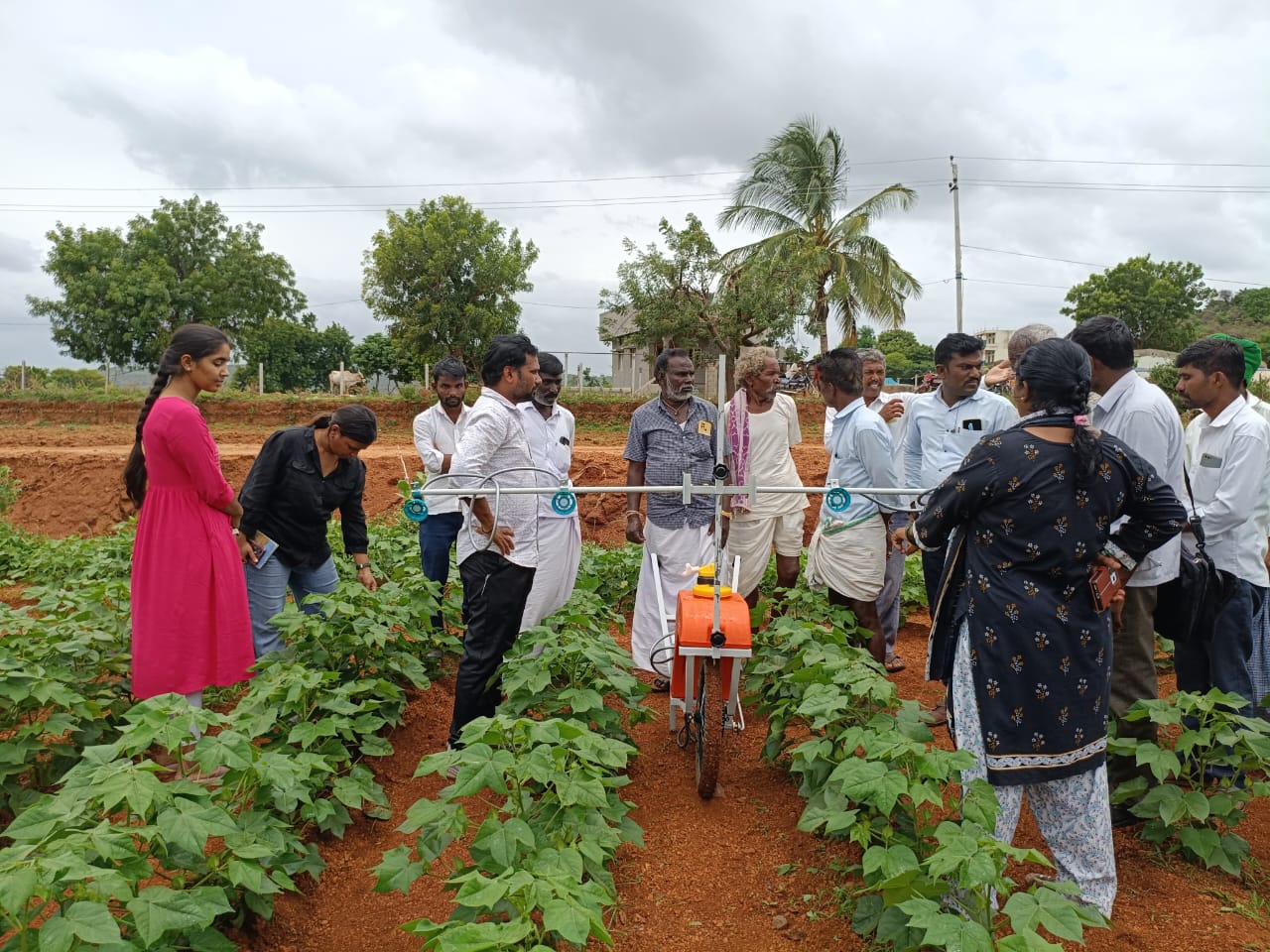
The Village-Level Entrepreneur model strengthens rural resilience and dignity
They got a chance to observe and operate the two-in-one trolley sprayer, a deceptively simple yet powerful tool. Combining both manual pumping and battery-powered spraying, it features a 24-litre tank, ergonomic design, and multiple nozzles. Women farmers, in particular, quickly recognised its value to reduce strain, and to cut the time required to half of what goes into manual pumping. The VLEs also handled another simple tool for cotton detopping and redgram nipping, which they found very useful.
Further, to ensure that the VLEs are able to innovate and cater to local needs, and also run their queries and concerns by each other and skilled experts, a digital platform has been established. VLEs use this platform to interact with members from the Innovation Guild, who share information and resources on latest innovations and discussions around agricultural technology across the country.
For farmers long accustomed to manual labour, the thought of gadgets can be a bit weary. But, seeing is believing, and that’s exactly what this series of programmes managed to do for them. Each piece of information gathered, and every successful demonstration encountered is a step towards building the confidence and belief they hold in themselves. The opportunity to test tools, compare outcomes, and arrive at informed perspectives has been transformative. And once confidence takes root, demand follows naturally, growing from one tool or one innovation to the next, across the farming cycle.
A Glimpse into Tomorrow
Imagine Lakshmi no longer bent double in her fields, but renting a lightweight, female-friendly weeder directly from her neighbour-turned-VLE. Imagine her daughter learning welding and tool repair under the VLE’s mentorship, securing both livelihood and pride.
Picture Mallesha able to time his pesticide spraying perfectly, using a precision sprayer rented affordably for two days, saving his crops and his wallet. Imagine local VLEs thriving as entrepreneurs, circulating knowledge, servicing machines, and anchoring resilience across clusters of villages.
These are not distant dreams, but evolving realities. Each VLE becomes a node of resilience, making sustainable practices practical, affordable, and replicable.
The future of sustainable agriculture in India cannot rely solely on external trainers parachuting in with slide decks and demonstrations that come to a halt at the end of the project cycle. Change cannot depend on every single household reinventing the wheel in isolation, either. Transformation will come when systems of enterprise form at the grassroots, rooted in relationships, powered by local entrepreneurship, and focused on convenience as much as sustainability.
The VLE model strengthens rural resilience and dignity in two distinct ways: by supporting the most significant rural livelihood stream, i.e. agriculture, and by empowering rural enterprise and stewardship, thereby creating a new livelihood stream for women, rural youth, and farmers at large. It makes rural lives and livelihoods aspirational, and restores the sense of pride and ownership that people share with their lands.
Above all, it affirms one vital truth: farmers do not lack aspiration. The problem has always been one of access and affordability. And as these local innovators emerge, villages will no longer remain fields of struggle alone. They will take their first steps toward becoming vibrant hubs of innovation – one well-oiled tool, one empowered woman, one trained youth at a time.
Acknowledgements
This work is supported by CLARE’s CLARITY project, IHE Delft (Remote Sensing for Communities), Nvidia CSR, and DCB Bank CSR across different villages in Karnataka’s Raichur district.
About CLARE
CLARE is a UK-Canada framework research programme on Climate Adaptation and Resilience, aiming to enable socially inclusive and sustainable action to build resilience to climate change and natural hazards. CLARE is an initiative jointly designed and run by the UK Foreign, Commonwealth and Development Office and Canada’s International Development Research Centre. CLARE is primarily funded by UK aid from the UK government, along with the International Development Research Centre, Canada.
About CLARITY
Climate Adaptation and Resilience in Tropical Drylands (CLARITY), a research project under CLARE, is building equitable, sustainable, and climate-resilient development pathways in tropical drylands. This Global South-led project will result in the creation of long-term assets (data and tools) and capacities to achieve transformational change.
Authored by Lokappa Nayak, Navitha Varsha
Edited by Sahana Srinath
Published by Nanditha Gogate
Follow us and stay updated about our work:





